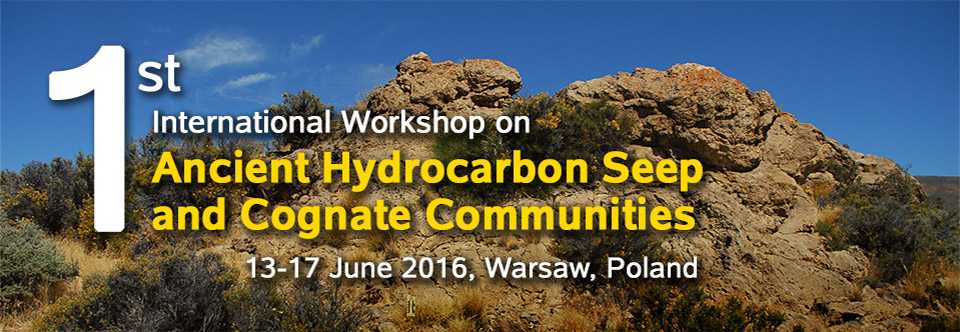
EVALUATION OF EARLY DIAGENETIC INFLUENCE ON NITROGEN ISOTOPES WITHIN FOSSIL AMINO ACIDS: TOWARDS AN ESTIMATION OF ANCIENT FOOD WEBS
Daijiro HAGEHASHI1, Robert G. JENKINS1, Akiko S. GOTO1, Yoshito CHIKARAISHI2, and Takashi HASEGAWA1
1Kanazawa University, Kakuma-machi, Kanazawa City, Ishikawa 920-1192 Japan; 2Institute of Biogeosciences, Japan Agency for Marine-Earth Science and Technology, 2-15 Natsushima-cho, Yokosuka, 237-0061, Japan.
Corresponding author: dadadadaijiro335@gmail.com
One of our tasks is understanding the evolution of chemosymbiosis in seeps and/or similar environments.
How can we know when the symbiotic relationship started? Some studies in molecular biology have estimated the time of origin of the symbiosis using a molecular clock approach. However, there is little evidence for the origin of symbiosis from the paleontological point of view. Although there have been studies of nitrogen isotope ratios of bulk shell proteins in an attempt to assess the trophic tendency among the studied fossil invertebrates, the previous work has always had considerable uncertainty due to the complex nitrogen cycle occurring in seep environments. Addressing those issues, we show that the compound-specific isotope analysis (CSIA) of nitrogen within amino acids (Chikaraishi et al. 2009) is applicable to assess the trophic position of fossilized animals. Although the hard parts (e.g., shells and bones) contain amino acids, it has not been evaluated whether or not the amino acids in the shell preserve the isotopic composition in the organisms when they grew. Thus, this study aims to evaluate how consistently the estimated trophic position determined based on CSIA in shells during early diagenesis. We use modern and fossil shells of the gastropod Turbo cornutus, which is considered to be a primary consumer (trophic level should be 2.0). Fossil Turbo shells were obtained from the Yuigahama (Kanagawa Pref., ca. 800 years ago) and the Torihama (Fukui Pref., ca. 6000 years ago) archaeological sites. Modern shells were also used. Some of the modern shells were heated to 200 and 400°C in an oven. Prior to the isotope analysis, the degree and quality of preservation of the samples were determined in several ways, including the use of X-ray diffraction, observations of shell microstructure by SEM and the measurement of the D/L ratio of amino acids within the shells. The T. cornutus shell was composed of three layers. The outer layer of the shell was found to be contaminated by encrusting biota. The middle layer retained its nacreous structure, but occasionally displayed erosion by microbes. In addition, the microstructure of the modern shell could be partially dissolved and recrystallized by heating at 400°C, and no amino acid was ultimately found in samples treated in that way. Thus, we performed CSIA on several fossil shells that preserved the original microstructure. Both the modern and fossil shells analyzed have a trophic position between 1.9 and 2.3, based on the CSIA of amino acids. These results suggest that early diagenesis does not affect substantially the nitrogen isotope ratios of amino acids in T. cornutus shells for at least 6000 years.
References
Chikaraishi, Y., Ogawa, N.O., Kashiyama, Y., Takano, Y., Suga, H., Tomitani, A., Miyashita, H., Kitazato, H., and Ohkouchi, N. 2009. Determination of aquatic food—web structure based on compound—specific nitrogen isotopic composition of amino acids. Limnology and Oceanography: Methods 7 (11), 740–750.
